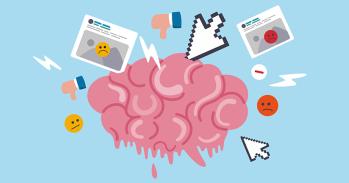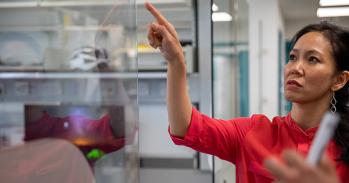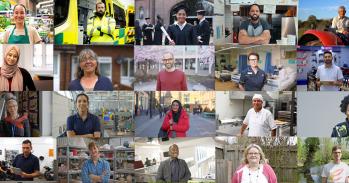
Geoffrey Hinton, an alumnus of the University of Cambridge, was awarded the 2024 Nobel Prize in Physics, jointly with John Hopfield of Princeton University.
Geoffrey Hinton, an alumnus of the University of Cambridge, was awarded the 2024 Nobel Prize in Physics, jointly with John Hopfield of Princeton University.
Hinton (King’s 1967) and Hopfield were awarded the prize ‘for foundational discoveries and inventions that enable machine learning with artificial neural networks.’ Hinton, who is known as the ‘Godfather of AI’ is Emeritus Professor of Computer Science at the University of Toronto.
This year’s two Nobel Laureates in Physics have used tools from physics to develop methods that are the foundation of today’s powerful machine learning. John Hopfield, a Guggenheim Fellow at the University of Cambridge in 1968-1969, created an associative memory that can store and reconstruct images and other types of patterns in data. Geoffrey Hinton invented a method that can autonomously find properties in data, and perform tasks such as identifying specific elements in pictures.
When we talk about artificial intelligence, we often mean machine learning using artificial neural networks. This technology was originally inspired by the structure of the brain. In an artificial neural network, the brain’s neurons are represented by nodes that have different values. These nodes influence each other through connections that can be likened to synapses and which can be made stronger or weaker. The network is trained, for example by developing stronger connections between nodes with simultaneously high values. This year’s laureates have conducted important work with artificial neural networks from the 1980s onward.
Geoffrey Hinton used a network invented by John Hopfield as the foundation for a new network: the Boltzmann machine. This can learn to recognise characteristic elements in a given type of data. Hinton used tools from statistical physics, the science of systems built from many similar components. The machine is trained by feeding it examples that are very likely to arise when the machine is run. The Boltzmann machine can be used to classify images or create new examples of the type of pattern on which it was trained. Hinton has built upon this work, helping initiate the current explosive development of machine learning.
Vice-Chancellor Professor Deborah Prentice said:
“Many congratulations to Professor Hinton on receiving the Nobel Prize. Our alumni are a vital part of the Cambridge community, and many of them, like Professor Hinton, have made discoveries and advances that have genuinely changed our world. On behalf of the University of Cambridge, I congratulate him on this enormous accomplishment.”
“The laureates’ work has already been of the greatest benefit. In physics we use artificial neural networks in a vast range of areas, such as developing new materials with specific properties,” says Ellen Moons, Chair of the Nobel Committee for Physics. Hinton and Hopfield are the 122nd and 123rd Members of the University of Cambridge to be awarded the Nobel Prize.
From 1980 to 1982, Hinton was a Scientific Officer at the MRC Applied Psychology Unit (as the MRC Cognition and Brain Sciences Unit was then known), before taking up a position at Carnegie Mellon University in Pittsburgh.
In May 2023, Hinton gave a public lecture at the University's Centre for the Study of Existential Risk entitled 'Two Paths to Intelligence', in which he argued that "large scale digital computation is probably far better at acquiring knowledge than biological computation and may soon be much more intelligent than us".

The text in this work is licensed under a Creative Commons Attribution-NonCommercial-ShareAlike 4.0 International License. Images, including our videos, are Copyright ©University of Cambridge and licensors/contributors as identified. All rights reserved. We make our image and video content available in a number of ways – on our main website under its Terms and conditions, and on a range of channels including social media that permit your use and sharing of our content under their respective Terms.




